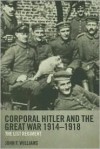Currently reading
A FIRST-RATE COMPARATIVE STUDY OF 2 REVOLUTIONARY AIRCRAFT

Osprey, as is evidenced by this book, has produced a fine and concise comparative study of 2 aircraft, which revolutionized aerial warfare.
The Fokker Eindecker, at the time of its introduction to combat over the Western Front in July 1915, was a shock to the Allied air forces opposing it. At a time when the biplane was widely accepted as the most stable and reliable aircraft design, the Fokker monoplane with its synchronized forward-firing machine gun in the hands of skilled pilots like Oswald Boelcke, Max Immelmann, Otto Parschau, and Kurt Wintgens gave Germany a large measure of air supremacy throughout the summer and fall of 1915. Boelcke and Immelmann, in particular, became adept at taking on Allied reconnaissance planes and shooting them down. Britain's Royal Flying Corps (RFC) developed a healthy fear for these 2 intrepid fighter pilots. (Not until the introduction of the DeHavilland 2 fighter in February 1916 would the British have an aircraft capable of taking on and besting the Fokker in combat.)
The Nieuport 11/16 Bébé variants arrived on the Western Front early in 1916. Speedy, agile and built like a thoroughbred, it challenged the Germans for air supremacy during the Battle of Verdun. The Fokker Eindecker, in terms of overall performance, was at a distinct disadvantage against the Nieuport. Only in terms of its gun platform (which in later Fokker variants was enhanced with a second machine gun for greater, concentrated firepower) did the Eindecker outpace the Nieuport with its single Lewis gun, which was perched on a platform on the upper wing, set to fire outside the propeller arc. So until the Germans were to come out with the Albatros D-type biplane fighters in late summer 1916, they had to soldier on with the Eindecker and a number of marginally better biplane fighters.
In summation: "The struggle for Verdun - more of a campaign than a battle per se - saw the first use of massed air assets and for several months pitted a frail German monoplane with a highly effective weapons system against a French design of somewhat superior structure and performance, armed with a makeshift, rather awkward gun mounting suspended above the pilot's head. Their confrontation more often took the form of attacking one another's two-seater reconnaissance aeroplanes than each other - as well it should, since 'blinding' the enemy was very much their primary purpose. Their actual encounters were relatively infrequent, yet sufficient to convince the Germans that the Fokker monoplane's fortunes were on the wane."
The highlights of the book are to be found in the photographs (one of them in original color - a rarity), the diagrams featuring the cockpit layouts of both aircraft, and maps and tables.
 1
1













